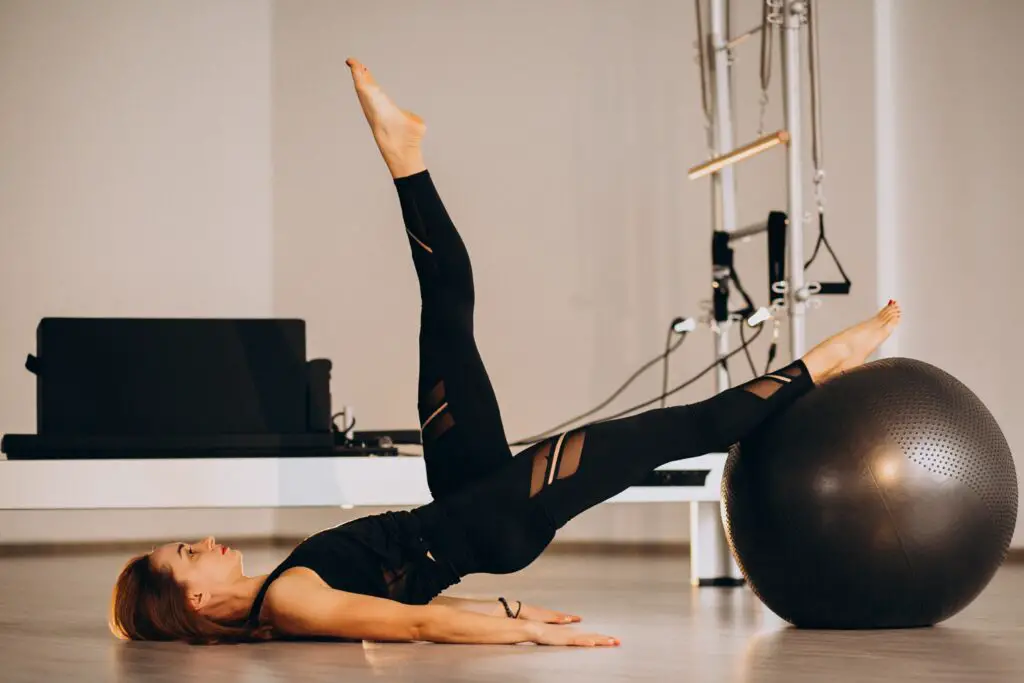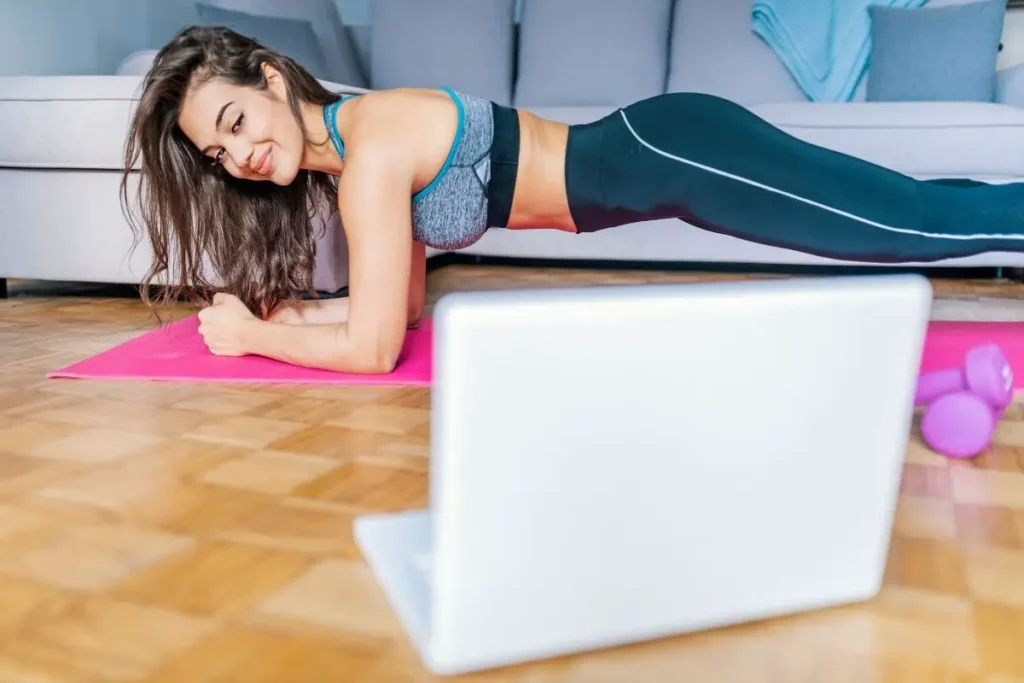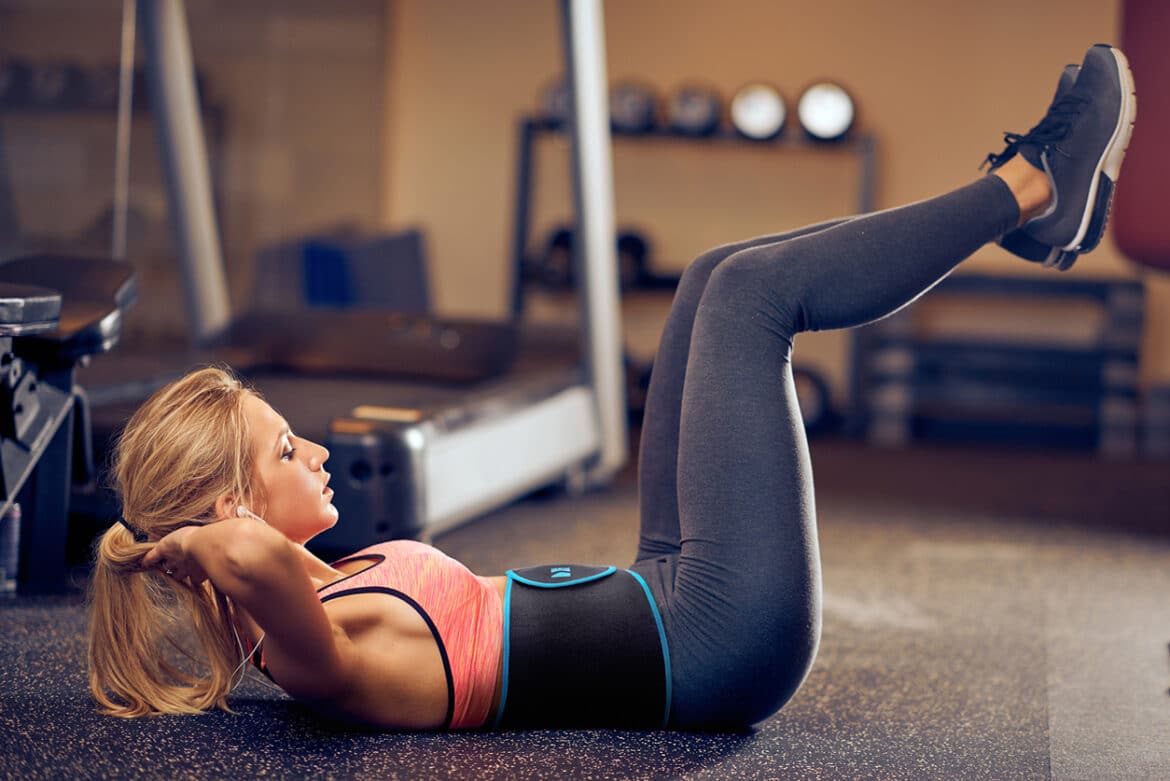Introduction
How Many Calories Does Pilates Burn: Pilates is a form of exercise that emphasizes core strength, flexibility, and overall body conditioning. It was developed by Joseph Pilates in the early 20th century and has since evolved into various styles and practices. Pilates can be performed on a mat with a series of controlled movements or using specialized equipment like the reformer.
Pilates is not typically associated with high-intensity calorie burning, like running or HIIT workouts. However, it can still contribute to calorie expenditure, especially if practiced consistently and with the right intensity. Many fitness enthusiasts combine Pilates with other forms of exercise, such as cardio workouts or strength training, to create a more comprehensive fitness routine. This combination can help increase overall calorie expenditure.
To determine how many calories you specifically burn during Pilates, you may want to use fitness trackers, heart rate monitors, or consult with a fitness professional. These tools can provide more accurate estimates based on your unique circumstances. Pilates may not burn as many calories as high-intensity workouts, it offers a host of other benefits, such as improved posture, core strength, and flexibility. The calorie burn during a Pilates session varies based on factors like intensity, duration, and personal characteristics. To achieve your fitness goals, it’s essential to incorporate Pilates into a well-rounded exercise routine and focus on its holistic benefits beyond just calorie burning.

How many calories do you burn in 30 minutes of Pilates?
The research team found that a 30-minute session at an intermediate level burned 180 calories, and continuing the workout burned an additional 90 calories each 15 minutes. It was also found that men burned slightly more calories than women (likely due to the fact that men are larger and have more muscle mass).
Intensity: The intensity of your Pilates practice is a major determinant of calorie expenditure. Pilates can range from gentle and restorative to vigorous and challenging. A more vigorous session, incorporating faster-paced movements or resistance, will naturally burn more calories.
Your Body Weight: Your body weight plays a role in how many calories you burn during any form of exercise. Generally, individuals with higher body weight tend to burn more calories for the same activity compared to lighter individuals.
Muscle Engagement: Pilates engages various muscle groups, especially the core, which can increase calorie burn as the muscles work to support and stabilize the body throughout the session.
Experience Level: Your experience and familiarity with Pilates can affect calorie burn. Those who are more experienced and can perform movements with precision may engage their muscles more effectively, potentially burning more calories.
Afterburn Effect: Pilates has the advantage of triggering the “afterburn effect” or excess post-exercise oxygen consumption (EPOC). This means that even after you finish your 30-minute session, your body continues to burn calories as it repairs and recovers.
Is Pilates a good way to Lose weight?
A 2021 study found Pilates to effectively reduce body weight and body fat percentage in participants with overweight or obesity. These effects were more pronounced in those with obesity only. Additionally, the study found that the longer a person performed Pilates, the more significant the weight loss.
Pilates and Calorie Burn
One of the primary factors to consider when evaluating Pilates as a weight loss tool is calorie burn. Pilates is generally considered a moderate-intensity workout, which means it may not burn as many calories per session as high-intensity workouts like running or HIIT (High-Intensity Interval Training).
On average, a person weighing around 155-160 pounds can burn approximately 120-180 calories during a 30-minute Pilates session conducted with moderate intensity. However, this number can vary depending on factors such as the intensity of the session, individual body weight, and muscle engagement.
Pilates and Weight Loss
Muscle Toning: Pilates focuses on building lean muscle, especially in the core, legs, and back. As you develop muscle mass, your body’s resting metabolic rate (the number of calories you burn at rest) increases. This can aid in long-term weight management by helping you burn more calories throughout the day.
Improved Posture and Body Awareness: Pilates helps improve posture and body awareness, which can lead to better alignment and reduced risk of injury during other physical activities. This can be particularly beneficial if you’re looking to incorporate more intense workouts into your routine.
Stress Reduction: Pilates emphasizes mindful movement and controlled breathing, which can reduce stress and emotional eating, contributing to weight loss and overall well-being.
How many calories do you burn in 20 minutes of Pilates?
Additionally, the results showed that you would burn 4 calories per minute with a beginner Pilates workout, 6 calories per minute, and 7.5 calories per minute with intermediate and advanced Pilates workouts, respectively.
Factors Affecting Calorie Burn in Pilates
Intensity: The intensity of your Pilates practice plays a significant role in calorie expenditure. More vigorous and challenging sessions tend to burn more calories compared to gentler, restorative workouts.
Body Weight: Your body weight influences how many calories you burn during exercise. Typically, individuals with higher body weights burn more calories for the same activity compared to lighter individuals.
Muscle Engagement: Pilates engages various muscle groups, especially the core. As you engage these muscles, you burn more calories to support and stabilize your body throughout the session.
Experience Level: Your experience with Pilates can affect calorie burn. Those who are more experienced and can perform movements with precision may engage their muscles more effectively, potentially burning more calories.
Afterburn Effect: Pilates has the advantage of triggering the “afterburn effect” or excess post-exercise oxygen consumption (EPOC). This means your body continues to burn calories even after you’ve completed the 20-minute session as it recovers and repairs.
Is 20 minutes of Pilates a day enough to Lose weight?
Is 20 minutes of Pilates a day enough to get results? The short answer is… absolutely! Keep reading to learn how to incorporate 20-minute Pilates challenges into your routine for a consistent and beneficial Pilates practice.
The Role of Calorie Burn
Weight loss is fundamentally tied to the concept of calorie balance: you need to burn more calories than you consume. While Pilates may not be the highest-calorie-burning exercise compared to high-intensity workouts like running or cycling, it can still contribute to weight loss when incorporated into a well-rounded fitness routine.
In a 20-minute Pilates session, the number of calories burned can vary widely depending on factors such as intensity, body weight, and muscle engagement. On average, a person weighing around 155-160 pounds may burn approximately 60-90 calories during this short workout. However, it’s important to remember that the effectiveness of Pilates for weight loss goes beyond just calorie burn.
Benefits Beyond Calorie Burn
Muscle Toning: Pilates focuses on building lean muscle, particularly in the core, legs, and back. More muscle mass can lead to an increase in your resting metabolic rate, which means you’ll burn more calories even when you’re not exercising.
Improved Posture: Pilates can improve your posture and body alignment, reducing the risk of injuries during other physical activities. This can enable you to engage in more intense workouts effectively.
Stress Reduction: Pilates emphasizes mindful movement and controlled breathing, which can reduce stress and emotional eating—two factors that can significantly impact weight loss.
Can you lose belly fat by doing Pilates?
That said, it’s important to note that spot reduction of belly fat is not possible with any exercise, including Pilates. For overall weight loss and belly fat reduction, a combination of Pilates, cardio exercises, and a healthy diet is the most effective approach.
Muscle Toning: Pilates is excellent for toning and strengthening the muscles of the core. As you engage in Pilates exercises, you work these muscles, helping to create a firmer and more defined midsection. Stronger core muscles contribute to better posture and a flatter appearance.
Increased Metabolic Rate: Building lean muscle mass, which Pilates promotes, can lead to a higher resting metabolic rate. This means that your body burns more calories, even at rest. Over time, this can contribute to fat loss, including in the abdominal area.
Improved Posture: Pilates emphasizes proper body alignment and posture. When you maintain good posture, your abdominal muscles are engaged and appear more toned. Additionally, improved posture can make you look taller and leaner.
Stress Reduction: Pilates incorporates mindful breathing and relaxation techniques, which can reduce stress. High stress levels can contribute to weight gain, particularly around the belly. By reducing stress, Pilates indirectly supports belly fat reduction.
Can Pilates get you in shape?
Pilates can change your shape through toning and its emphasis on alignment and improving posture. It’s known for working from the inside out and can give you the appearance of being taller and slimmer. While you can work up a sweat from Pilates, on its own it isn’t the most effective way to lose weight.
Core Strength: One of the primary benefits of Pilates is its ability to build core strength. The core muscles, including the abdominals, obliques, and lower back, are vital for stability and overall fitness. A strong core can improve posture and reduce the risk of back pain.
Muscle Toning: Pilates engages various muscle groups throughout the body. It can help tone and strengthen not only the core but also the legs, arms, and back. Regular Pilates practice can lead to lean and defined muscles.
Flexibility: Pilates incorporates stretching exercises that enhance flexibility. Improved flexibility can reduce the risk of injuries and improve overall mobility and range of motion.
Posture and Alignment: Pilates emphasizes proper body alignment and posture. This can lead to a more upright and confident appearance, as well as a reduced risk of developing poor posture-related issues.
Mind-Body Connection: Pilates encourages a strong mind-body connection through focused breathing and mindfulness during exercises. This can lead to increased body awareness and better control over movements.
Does Pilates slim your waist?
For example, Pilates exercises that have sit-ups, boards or adaptations with movements of the lower and upper limbs are the best for reducing the waist, as they require great physical effort and breakdown the fat molecules. There is no doubt: the Reformer Pilates can contribute to reducing the waist.
How Pilates Can Help Slim Your Waist
Muscle Toning: Pilates is excellent for toning and strengthening the muscles of the core, including the obliques. As you engage in Pilates exercises, you work these muscles, helping to create a firmer and more defined midsection. While Pilates won’t make you lose fat exclusively in your waist, it can make your waistline appear more toned and shapely.
Improved Posture: Pilates emphasizes proper body alignment and posture. When you maintain good posture, your abdominal muscles are engaged and appear more toned. Additionally, improved posture can make you look taller and leaner, giving the illusion of a slimmer waist.
Waist Trimming Exercises: Pilates includes specific exercises designed to target the waist area. Movements like side planks, oblique twists, and the “Saw” exercise can help tone and strengthen the muscles along your sides, contributing to a more defined waistline.
Enhanced Core Stability: A strong and stable core can improve your overall body control and balance. This can lead to better control over your midsection, making it easier to engage and activate your abdominal muscles, which can help slim the waist.
Can Pilates reduce thigh fat?
It increases muscle strength by balancing out smaller muscles groups with the larger, stronger ones. One benefit of Pilates in regards to thigh and stomach fat is that these muscles groups will gain strength, creating that “lean and long” look and in turn making the body fat less noticeable.
What Pilates May Not Do
Spot Reduction: Pilates, like other forms of exercise, cannot target fat loss in specific areas of the body. Fat loss is determined by genetics and hormonal factors, and your body decides where it burns fat. Thus, you can’t exclusively lose fat from your thighs through Pilates alone.
Calorie Burn: Pilates may not burn as many calories as high-intensity cardio workouts. Effective fat loss often requires a combination of calorie-burning exercises and a balanced diet.
Maximizing Thigh Fat Reduction with Pilates
Combine with Cardio: Integrate Pilates into a comprehensive fitness routine that includes cardiovascular exercises like running, cycling, or swimming. Cardio workouts create a calorie deficit, which is essential for fat loss.
Balanced Diet: Pay attention to your dietary habits. A balanced diet that includes whole foods, lean proteins, fruits, and vegetables is crucial for fat loss and overall health.
Consistency: Regular Pilates practice, combined with a balanced diet and cardio exercises, can lead to effective results over time.
Set Realistic Goals: Understand that spot reduction is not a viable strategy. While Pilates can tone and strengthen your thighs, overall fat loss will impact the entire body.

Conclusion
The question of how many calories Pilates burns is a multifaceted one. Pilates, with its emphasis on core strength, flexibility, and overall body conditioning, may not be the highest calorie-burning exercise compared to more intense workouts. However, it offers a range of other invaluable benefits, including improved posture, balance, and a strong mind-body connection.
The calorie burn during a Pilates session varies significantly based on factors like intensity, duration, body weight, and individual effort. It’s important to remember that the effectiveness of Pilates extends beyond the immediate calorie expenditure. Pilates can enhance the afterburn effect, where the body continues to burn calories after the workout, and it can be an integral part of a well-rounded fitness routine.
Ultimately, the decision to incorporate Pilates into your fitness regimen should be based on your individual goals and preferences. Whether you’re seeking a gentle yet effective way to improve your overall fitness or looking to complement other forms of exercise, Pilates offers a unique and rewarding journey towards better health and well-being. So, rather than fixating solely on calorie burn, consider embracing Pilates for its holistic benefits and its potential to transform your body and mind.

